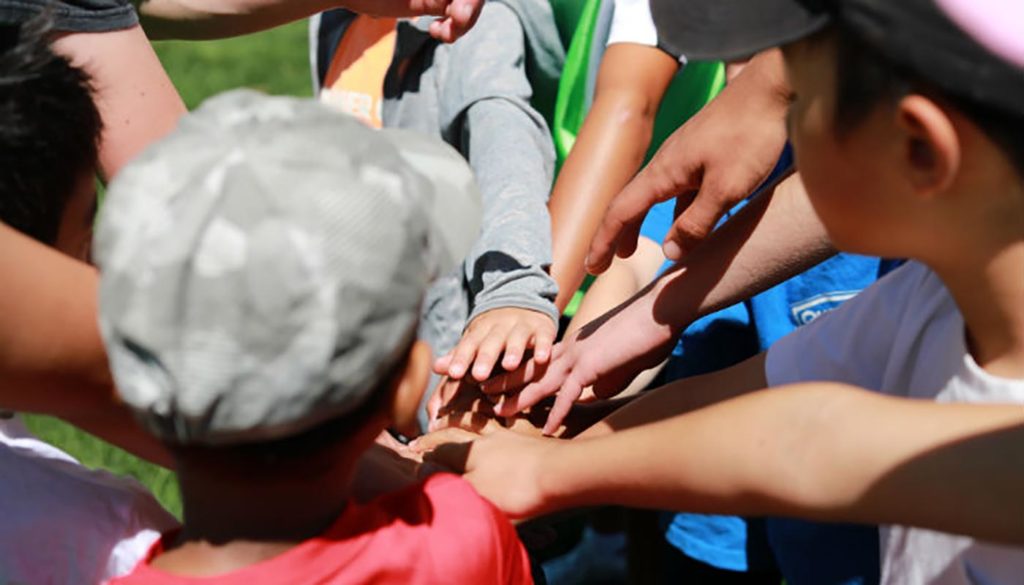If you’re a head coach at E-Soccer, then one of your responsibilities is creating and leading the weekly agenda for your group. You’re also in charge of communicating that agenda to the assistant and peer coaches. Here is an example agenda:
| Activity | Time | Description | Coach to Lead It |
| Introduce Names | 5 minutes | Stand in a circle. Kick soccer ball to one another. People say their names when they get the soccer ball. | Coach Jill |
| Warm-ups | 5 minutes | Stretches
Run around Field |
Coach G |
| Drill | 5 minutes | Mountain Valley (children dribble while coach calls out commands, e.g.”elbow on the ball!”) | Coach Adrian |
| Drill | 5 minutes | Pair Passing | Coach Caren |
| Water and Snack Break | 5 minutes | Make sure children make it safely to their families. While the kids are on the water break, have a coach huddle; talk about how things are going and what is next on the agenda. | Coach Jill |
| Drill | 5 minutes | Red Light Green Light | Coach Adrian |
| Drill | 5 minutes | Sharks and Minnows | Coach G |
| Scrimmage | 10 minutes | Goals:
Work on passing Work on encouraging teammates |
Coach Jill |
| Encouragement Time | 5 minutes | Huddle up. Each child says one good thing that their peer did. Make sure each child gets encouraged. | Coach Jill |
Inclusion tips for leading a session:
-
Keeping each practice structured the same will help kids know what to expect and to stay calm and attentive. Create two weekly agendas and alternate between them each week.
- There needs to be enough novelty and challenge within the structure of the agenda so that each child is neither bored nor overwhelmed.
- Make sure that the children who need support with motor skills, emotional control, and/or attention are paired with assistant or peer coaches. This pair can leave the group at any time if the child needs a break. They can also choose another player to bring with them to go and play a different game. This way the children are building friendships even if some of them can’t participate in the large group that day.
- Transitions between Drills:
- Forewarn: Have a countdown between each drill. State when drill will be finished and what will come next.
- Give clear direction on what to do next: “Everyone pick up a cone and line up here”.
- Minimize downtime: Make sure your transitions happen smoothly and quickly by coaches setting up next drill while finishing current one.
- Organize: Think about how to order your drills for ease of transitions.
Communicating with Assistant and Peer Coaches:
- Get the assistant and peer coaches’ contact information at the first session of the season. Set up a group email, group text, Facebook group, GroupMe, or any other form of communication with this group. This way you can all let one another know if you will be there or not and adjust each session according to how many coaches are coming.
- Contact people in a professional manner. Remember that people’s contact information is personal and not to be given out without their permission.
- Try to get a consistent group of coaches coming. The children need consistency to feel secure. You need consistent coaches in order to develop teamwork.
- Ask all coaches to arrive an hour ahead of the children to plan the day, address any needs or concerns, practice drills, and have time for team bonding activities.
- Remember the resources that E-soccer provides. Send coaches articles and videos that will help them with supporting the kids with different needs or lead drills.



